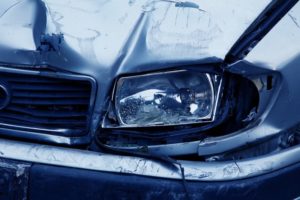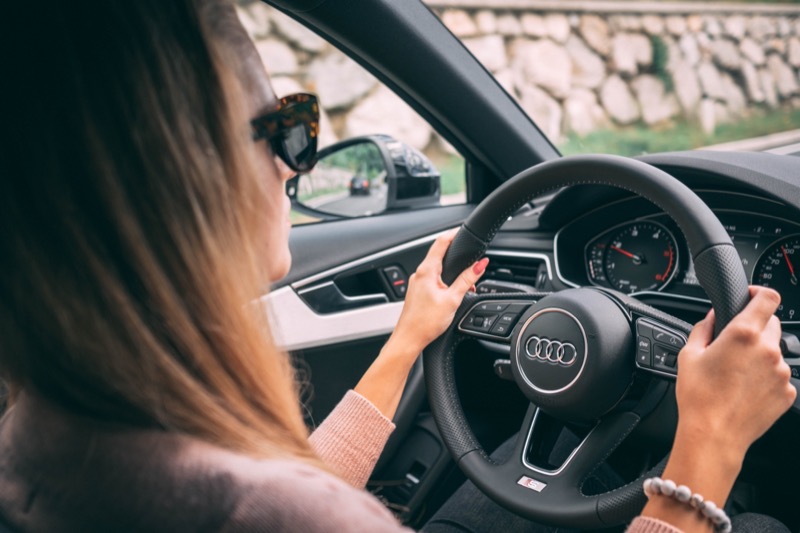When I first started driving and took to the streets, dear old Dad was right about one thing. “Son, always go slow in reverse. Your first car accident will be backing into something if you are not careful.” Who knew he would be right on the money when I put a dent in the chrome bumper of my 1968 Camaro. Luckily that bumper was made of steel, and through some massaging, metal dollies and hammer whacks it could be reasonably restored to its original shape on the budget of a high school student.
Technology Helps to Prevent Accidents
 Today, however, our vehicle bumpers are made of composite plastics that look sleek but can’t provide much impact protection. The NHTSA has lowered the speed of the “bumper test” from 5 MPH to 2.5 MPH. If you have had the displeasure of smacking your bumper into anything at any speed over 5 MPH, you found out the hard way that the repair bill was astronomical. That’s why the Insurance Institute for Highway Safety (IIHS) wanted to know what technologies could be useful in reducing claims.
Today, however, our vehicle bumpers are made of composite plastics that look sleek but can’t provide much impact protection. The NHTSA has lowered the speed of the “bumper test” from 5 MPH to 2.5 MPH. If you have had the displeasure of smacking your bumper into anything at any speed over 5 MPH, you found out the hard way that the repair bill was astronomical. That’s why the Insurance Institute for Highway Safety (IIHS) wanted to know what technologies could be useful in reducing claims.
In the annual compilation of the organization’s research on the impact of crash avoidance technologies, the top feature on new vehicles was rear automatic emergency braking (AEB). New vehicles have the ability to warn you of an obstacle behind you and then automatically slam on the brakes if the system senses an impending impact. Although automatic braking may be the gold standard, a warning system will be enough for most owners of legacy vehicles to become alert and slow down in time to avoid, or reduce the severity of, an impact.
For the study, IIHS took a look at 2014–15 General Motors vehicles and 2015–18 Subaru vehicles. The researchers found that vehicles equipped with rear automatic emergency braking had 28 percent fewer property damage liability claims and 10 percent fewer collision claims for the two manufacturers. Senior Vice President of the IIHS and HLDI Matt Moore said, “We haven’t seen that kind of reduction in claims for vehicle and other property damage from any other advanced driver assistance system. The impact of rear AEB on injury crashes was relatively small, which makes sense based on the type of crashes the technology is designed to avoid. Backing crashes generally happen at lower speeds than front-to-rear crashes. That means they’re less dangerous, but the costs from vehicle damage can add up.”
 Low-speed backing-up crashes represent a substantial portion of insurance claims. A separate IIHS analysis that looked at the point of impact of crashes found that claims for rear damage of less than $2,000 accounted for 17 percent of all collision claims and over $8 billion in estimated damage during calendar years 2010–17.
Low-speed backing-up crashes represent a substantial portion of insurance claims. A separate IIHS analysis that looked at the point of impact of crashes found that claims for rear damage of less than $2,000 accounted for 17 percent of all collision claims and over $8 billion in estimated damage during calendar years 2010–17.
Backup sensor technology can reduce substantial headaches for vehicle owners. Both front and rear AEB systems use sensors like cameras or radar to detect when the vehicle is getting too close to an obstacle and automatically apply the brakes to avoid or mitigate collisions. IIHS tests and rates both systems, and that is when you get ratings like “Top Safety Pick+” when shopping for a new vehicle.
Upgrade Your Vehicle Safety Technology
It would be nice to purchase a brand-new vehicle with AEB, but you can easily add backup safety sensors to your current vehicle. An audible and visual alert can help your right foot be at the ready if a collision is impending, and a Vision Zero Automotive Network retailer can help you determine the best solution for your vehicle. It probably will be a combination of backup sensors coupled with a backup camera.
Although the ability to slam on the brakes automatically is not ready in the aftermarket just yet, the ability of aftermarket components to communicate with other OEM systems in the car is growing every day. Just recently, a company announced it has the technology to allow vehicles to back out of tight parking spaces via remote control. New vehicle technology is incredible, and your Vision Zero Automotive Network retailer can help you add it to your older vehicle. The anxiety — or worse, the reality — of backing into an obstacle can be mitigated.


